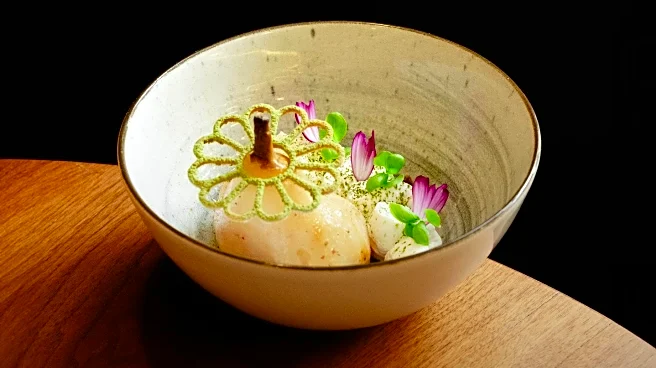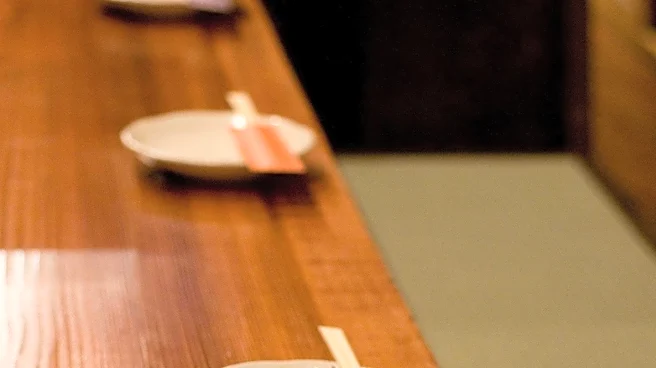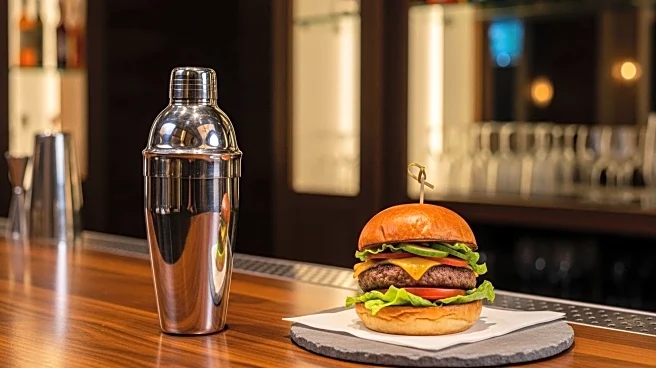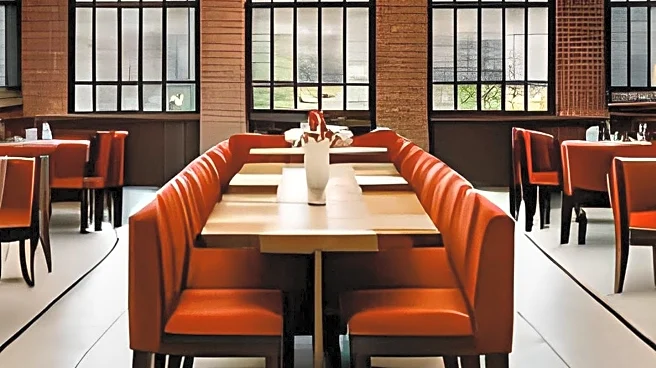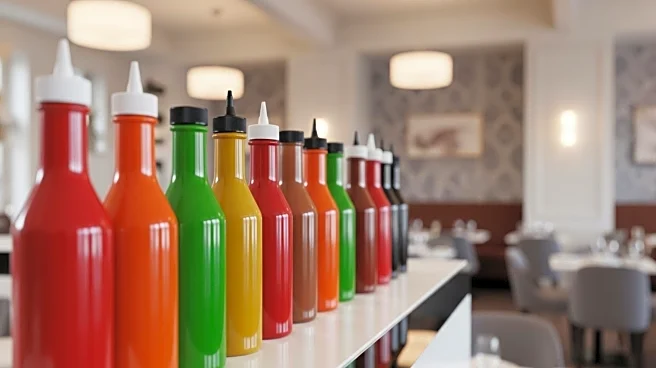What's Happening?
Chef Yosuke Suga, a former protégé of the late Joel Robuchon, has established Sugalabo, an exclusive restaurant in Tokyo that eschews traditional Michelin star evaluations. Opened in 2015, Sugalabo operates on a unique invitation-only basis, where diners must be recommended by existing patrons. The restaurant does not have an online booking system or set opening times, and it is known for its omakase menu, which allows Suga to showcase the best of Japanese produce with French culinary influences. Suga's approach focuses on building a two-way relationship with guests, ensuring a personalized dining experience that aligns with their preferences and backgrounds.
Why It's Important?
Sugalabo's model challenges the conventional restaurant industry norms by prioritizing guest experience over critical acclaim. This approach highlights a shift towards more personalized and exclusive dining experiences, which could influence other high-end restaurants to adopt similar practices. By focusing on hyper-seasonal ingredients and building relationships with suppliers, Sugalabo also emphasizes sustainability and the importance of local produce. This could inspire a broader movement within the culinary world towards more sustainable and locally-focused practices, potentially impacting how restaurants operate globally.
What's Next?
As Sugalabo continues to thrive, it may inspire other chefs and restaurateurs to explore similar exclusive dining models. The restaurant's success could lead to increased interest in hyper-seasonal and locally-sourced menus, encouraging more establishments to prioritize sustainability. Additionally, Suga's expansion into collaborations with luxury brands, such as the opening of Sugalabo V in Osaka, suggests potential growth opportunities for exclusive dining experiences in partnership with high-end brands.
Beyond the Headlines
Sugalabo's approach raises questions about accessibility and inclusivity in the culinary world. While the exclusivity of the restaurant creates a unique experience for its patrons, it also limits access to a select few, potentially reinforcing elitism in dining. This model may prompt discussions about the balance between exclusivity and accessibility in the restaurant industry, and how chefs can create exceptional experiences without alienating broader audiences.
